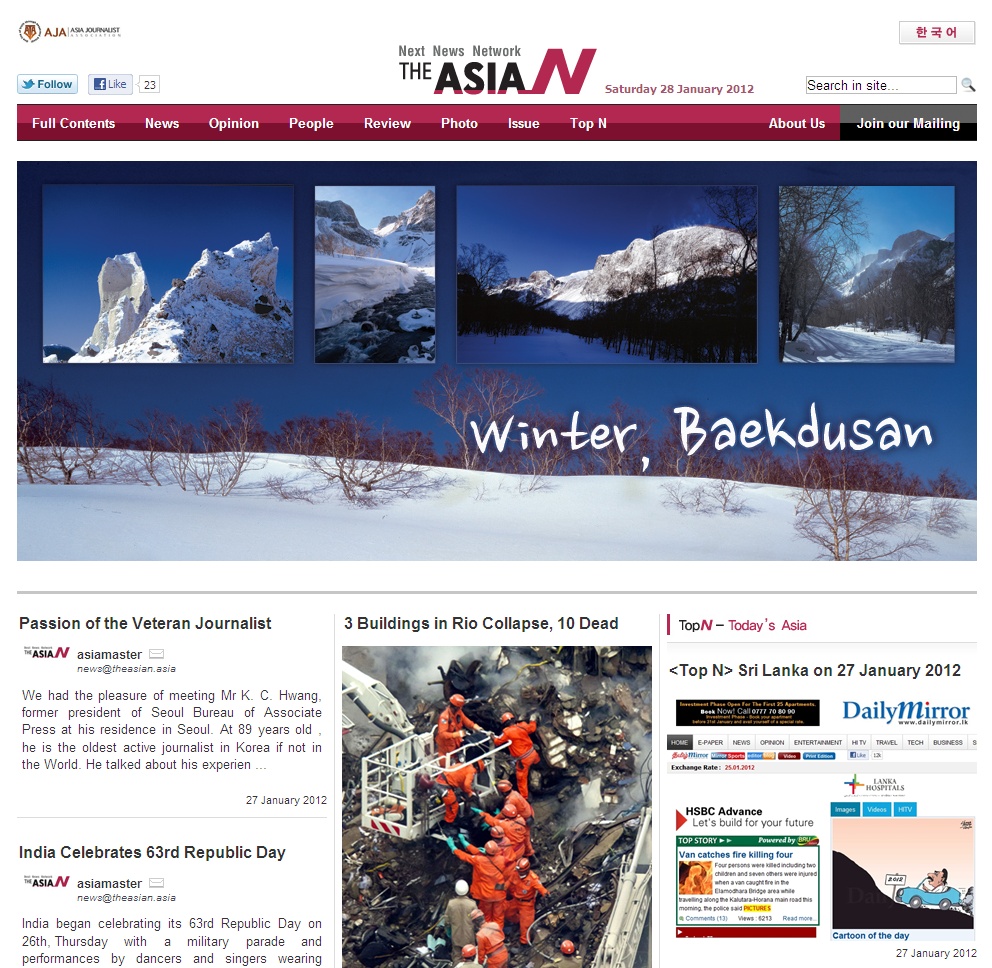
Winter in Mount Baekdu

Mount Baekdu
Mount Baekdu, also known as Changbai Mountain and Baitou Mountain when referrting to only the mountain and both the mountain and its crater lake respectively in China, is a volcanic mountain on the border between North Korea and China. It is the highest mountain of the Changbai mountain range to the north and Baekdudaegan mountain range to the southa and also the highest mountain in the Korean peninsula and in Northeast China.
A large crater lake called “Heaven Lake (Chinese:天池)” is in the caldera on top of the mountain.

Mount Baekdu is a stratovolcano whose cone is truncated by a large caldera, partially filled by the waters of Heaven Lake. The caldera is believed to be created by a major eruption in 969 AD(+/- 20 years). Volcanic ash from this eruption has been found as far away as the southern part of Hokkaido, the northern island of Japan. From mid-October to mid-June, the lake is typically covered with ice. In 2011, experts of both North and South Korea met to discuss the potential for a significant eruption in the near future as the volcano explodes every 100 years or so. The last time was in 1903.
Water flows north out of the lake, and near the outlet there is a 70m (230ft) waterfall. The mountain is the source of the Songhua, Tumen and Yalu rivers.

Climate
The weather on the mountain can be very unpredictable and sometimes severe. The annual average temperature at the peak is −8.3C (17.1F). During the summer months, temperatures of about 18C (64F) or higher can be reached and during the winter months, temperatures can drop to −48C (−54F). Average temperature is about −24C (−11F) in January, and 10C (50F) in July.

Foreign visitors usually climb the mountain from the Chinese side although Mount Baekdu is a common tourist destination of North Korea. Mount Baekdu has a special meaning to Koreans as it is the highest place of the Korean Peninsula. Often called as “The Holy Mountain of the people of Korea”, it appears in the first line of national anthem of Korea.



